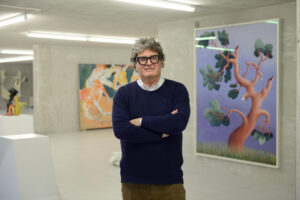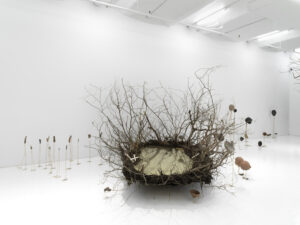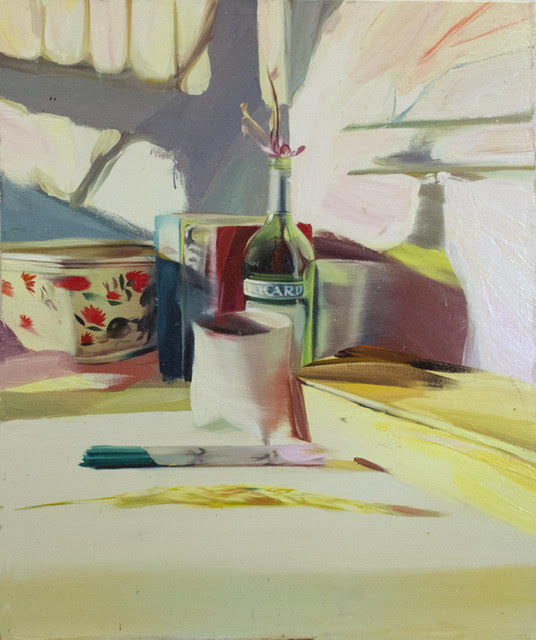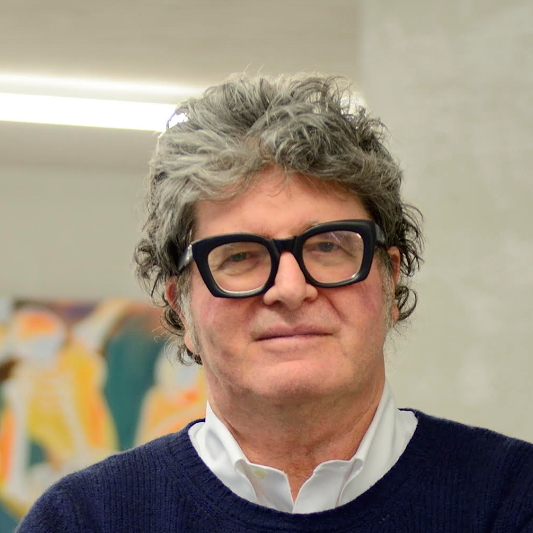Not only a valued doctor and healthcare entrepreneur in Italy, Mauro De Iorio is also known to be a very eclectic contemporary art collector. He is convinced that art can cure and perhaps for this reason, since years, in his clinics it is possible to admire artworks belonging to his large collection.
Distributed in different exhibition locations, between Trento, Verona, Venice and Paris, the MDI art collection is a vast set of contemporary works from both established and very young artists. Apparently very different from each other, taking a closer look, such works accurately describe his personality: irreverent, curious, whimsical, interested in young more innovativeartists. Certainly, he is also a generous and deep soul. In few words: a man of extremely great passion.
Question: As a doctor and art collector, how did you live the effects of this global emergency, that is also a cultural, intellectual, and social shock?
Answer: During the first phase, as a doctor my interest and concern was mainly directed towards the global health emergency, especially in our country. The dramatic and complex situation that developed immediately led me to a path of reflection and self-analysis also as a collector. Lost certainties became an opportunity to take stock and to look at my pieces with different eyes: I realized that, in that moment, some works were closer to my new moods so I thought of grouping them with the hashtag #artepandemia sul mio profilo Instagram.

Within Collective, an association of collectors of which I am vice-president, I proposed to extend to the other members this process of self-analysis. The purpose was to identify some works that they found particularly related to the emotions that the period was arousing in them. The result was a virtual exhibition project. The curatorship and selection of the works was entrusted to Denis Isaia, an Italian curator to whom I have been close friends for many years and who accepted with enthusiasm: Il quadrante sdrucciolevole . I experienced a moment of rethinking, a forced break from the chaotic world of fairs and openings. I must say that the technology at our disposal made up for this lack. Of course, relations with the galleries and artists continued and the projects went ahead.
Q: Since Caravaggio and before him, art has always staged in its representations of medicine in a theatricality of miraculous healings, of active doctors and has tried to objectify by investigating diseases and their effects. What are the most critical aspects young artists are currently confronted with , what is the future heritage of this particular historical moment?

A: Young artists must give free rein to their emotions and to the perception of the historical moment they are experiencing. Obviously, for everyone the interpretation of this period will be different, depending on their nature and sensitivity.
Q: Art, in all its forms, has the power to cure: the WHO (World Health Organization) has recently declared it as well. Have you ever experienced it? If yes, in what way?
A: Certainly, art has a healing power. For a collector like me, attracted above all by images, there is an evident link between the works I am most fascinated by and the images present in my memory and in my unconscious. When you find projected in the works the images that are inside you, this allows you to process them and leads to a sort of self-analysis.
Q: The pandemic has produced, for example in photography, new paradigms. From the private to the collective selfie as a social, but very often also artistic message. Doctors and nurses have opened an immense and unprecedented communication channel. Some images have become a powerful message. To get to Banksy who replaced traditional superheroes with a nurse. Then there are icon images that mark this moment: one of them all, the pope alone in the rain in St. Peter’s Square. Apocalyptic. Does a new art form open, or come back, as a social medium? What should we call it? Will it have a market?
A: Evidently some images that were particularly touching and representative of this period will remain: the solitude of the Pope in St. Peter’s Square, the column of military trucks carrying the bodies of the deceased, the images of the resuscitation wards, the cities emptied by presence of humans. They have become as iconic as the images of the twin towers in flames, or the photograph of the corpse of the migrant child on the Turkish beach. Images that would have been unthinkable until some time ago, that will remain in our history. As far as art is concerned, I don’t think that new artistic expressions will be formed, but, without a doubt, this dramatic situation will leave an indelible mark on the souls of the most sensitive artists, therefore on the works they will produce.
Q: Considering that at this moment, in Italy as well, appeals are coming from many parts of the world about the need to support young artists. The dream of many collectors is to discover a young talent, invest and see the value of his/her works increase. How do these two aspects combine?

A: My attitude towards young people is the same as I have towards mid-career artists: I try to find those to whom I feel an immediate empathy for their research and their works. I follow and try to support the young artist by buying his/her works, and this is important especially for Italian artists who have more difficulty in establishing themselves especially on the international market. The purchase in these cases takes on a meaning of patronage.
Q: Which are your guiding values in choosing the artists to support? Do you think they could change from now on?
A: The criteria that guide me in choosing artists and works are the ones I was talking about before. I follow with particular interest some artists, such as Benni Bosetto, who, recently, proposed to me a new project,to which I agreed with enthusiasm. This consists in the realization of an ad hoc work, a large bronze sculpture. I supported Benni in the past and I always follow her with great interest. Like her, there are other artists whose works I have acquired, for example Andrea Fontanari, Oscar Giaconia, Francesco Gennari, Alessandro Pessoli, Guglielmo Castelli, Petrit Halilaj, Neboisa Despotovic. I am certainly not conditioned by investment criteria: I have never been interested in this aspect.
It has been very interesting in this historical period to discover Mauro De Iorio’s point of view because in the general crisis, when many things cannot be explained, even art can become a means to express one’s moods and heal the soul.
Katia Tenti. Copyright © 2020 All rights reserved.


Comments